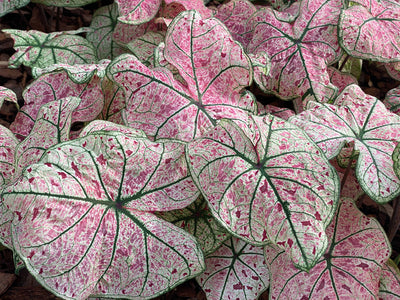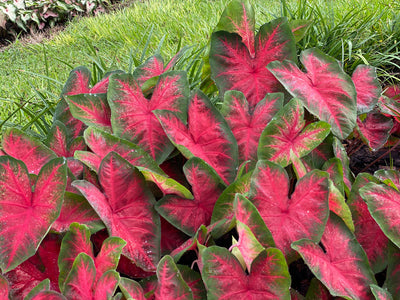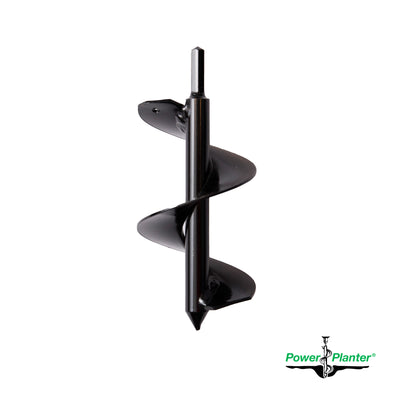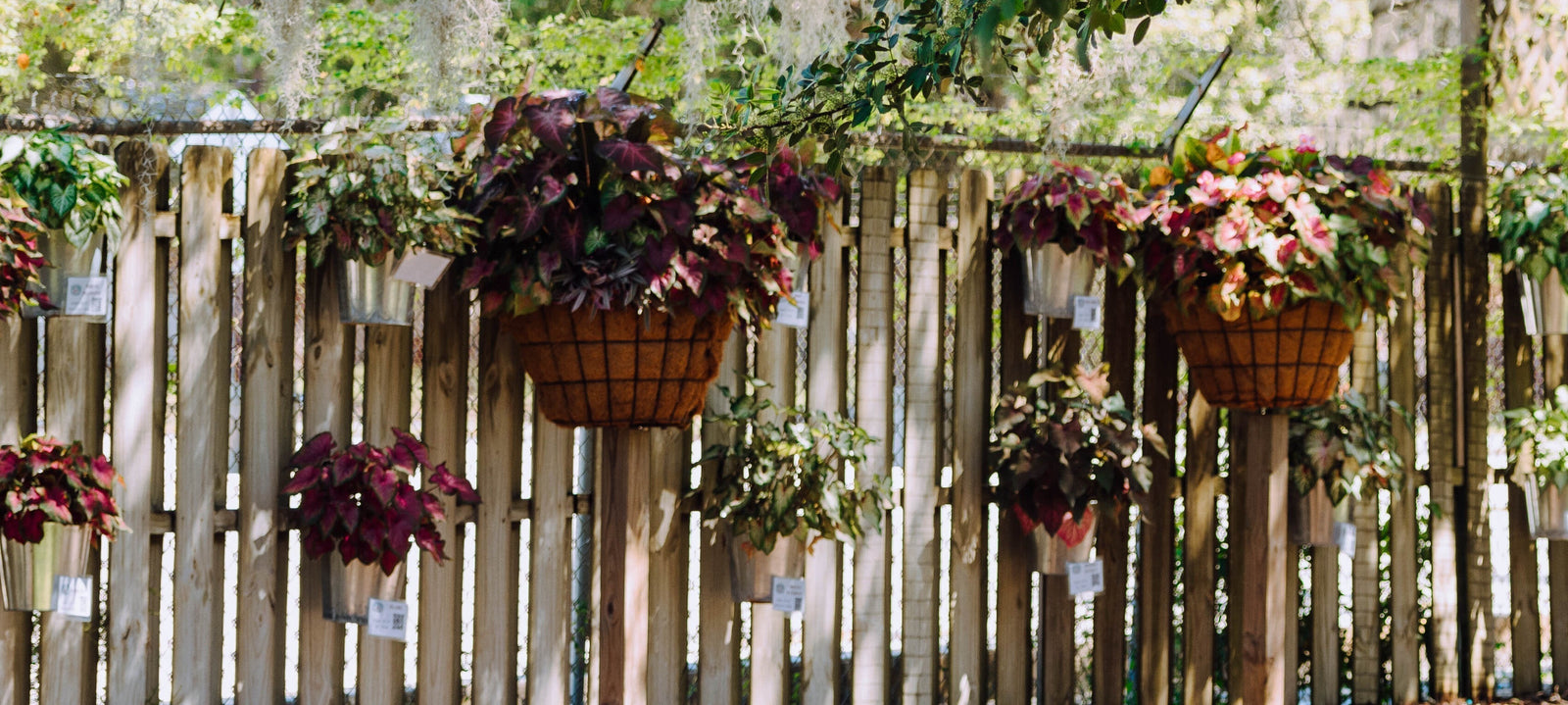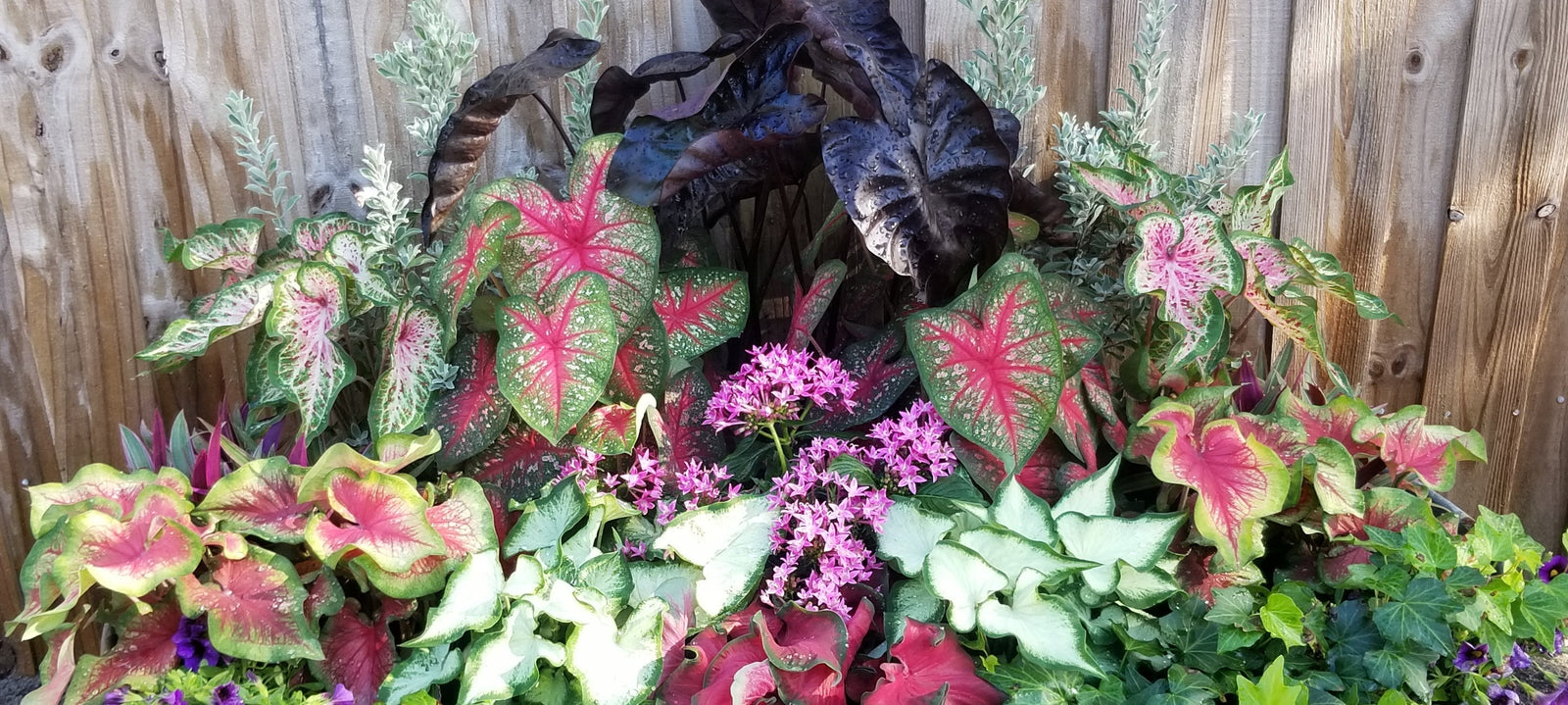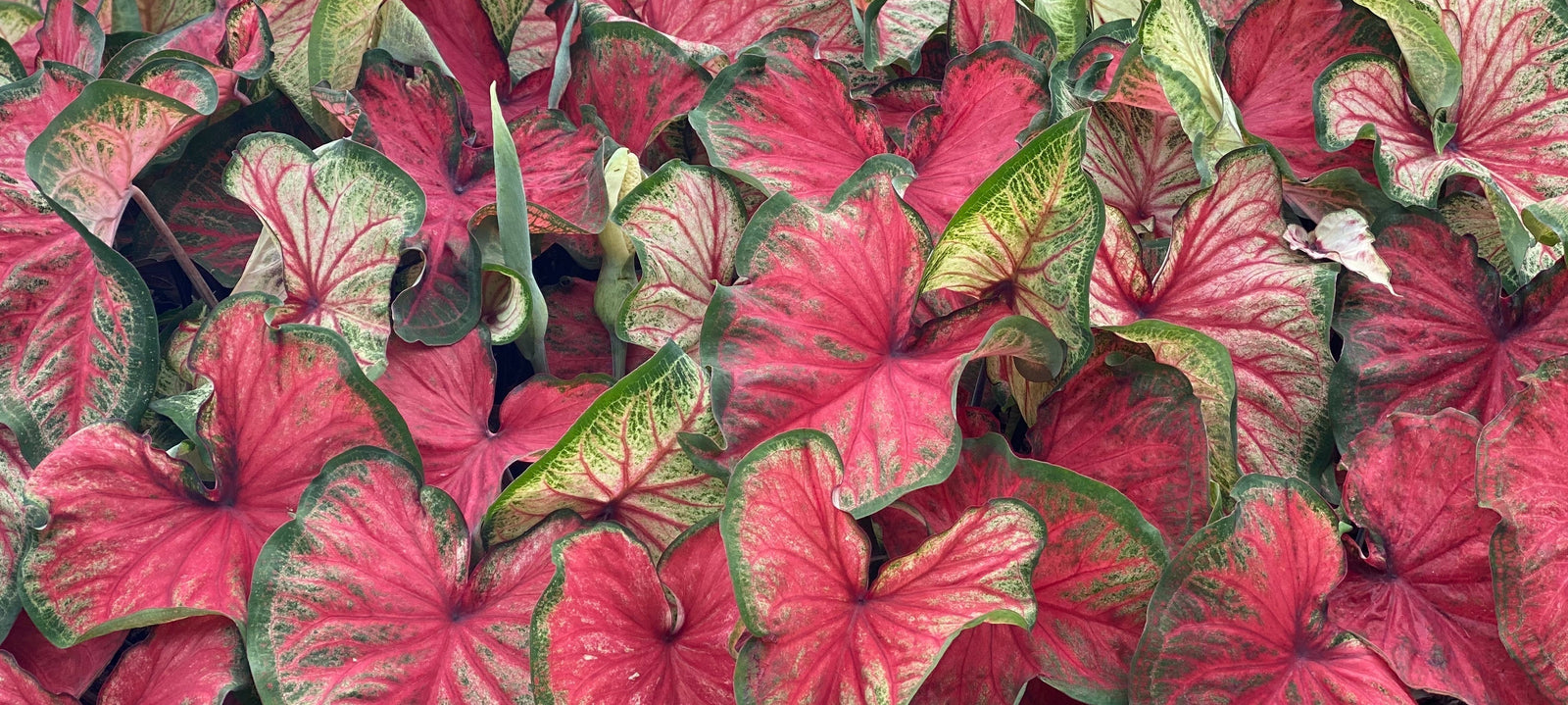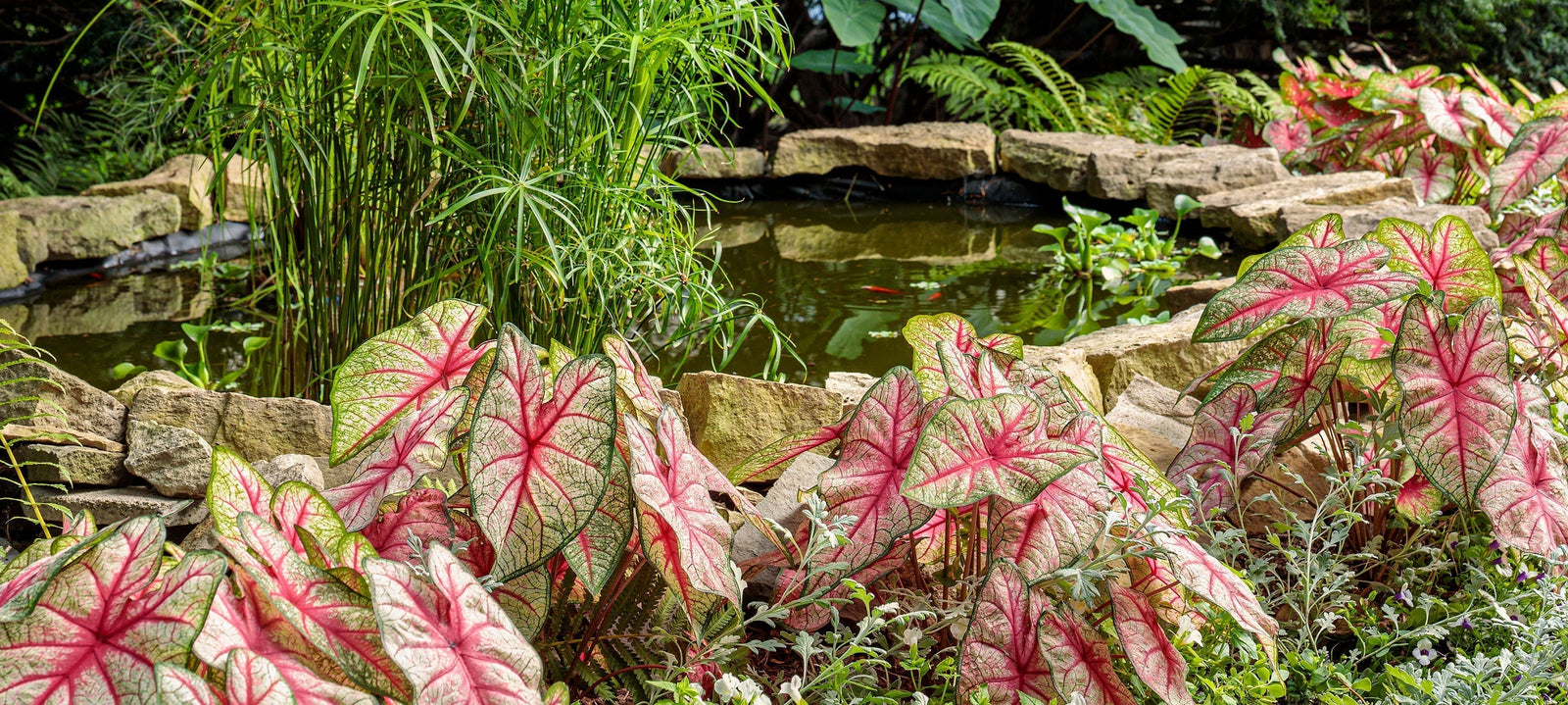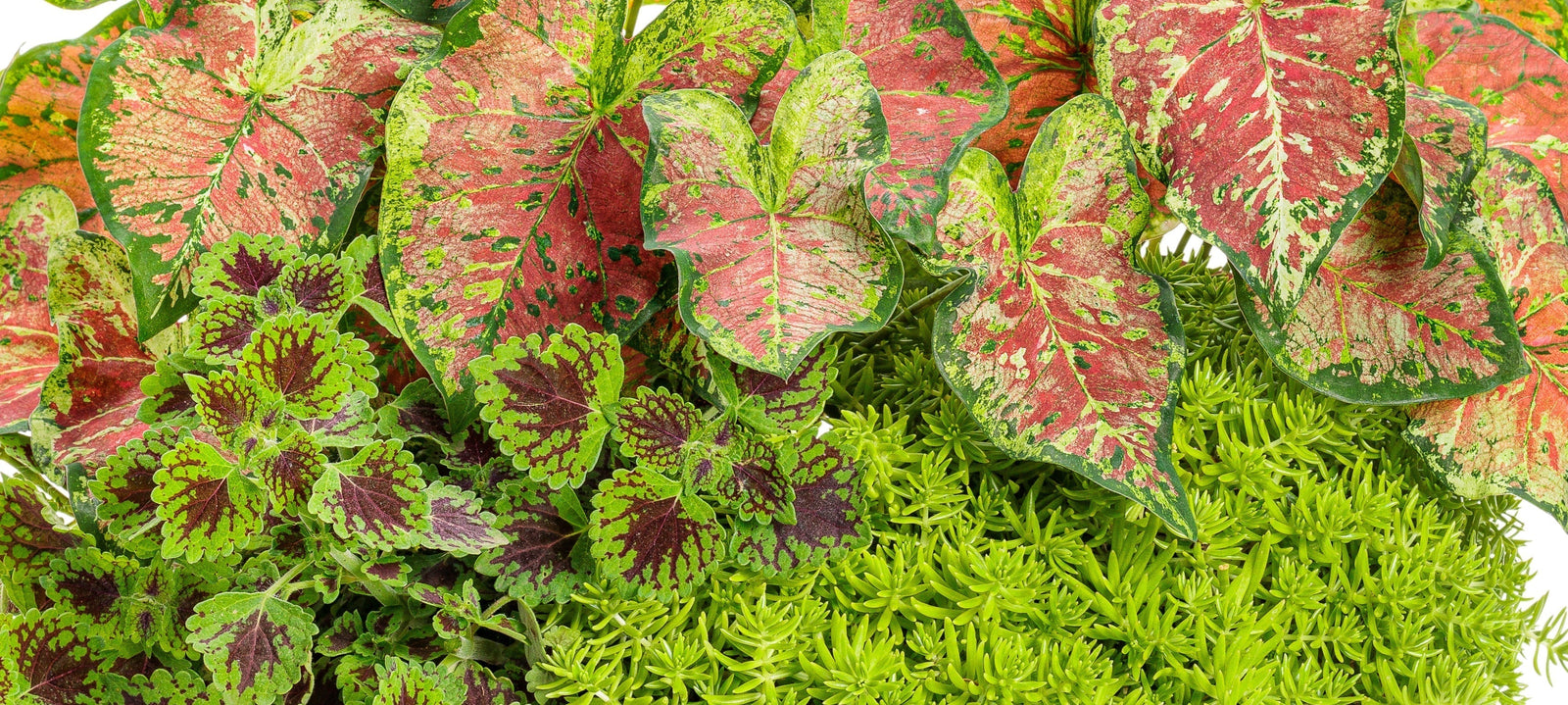Caring for Caladiums in Containers
March 20, 2024
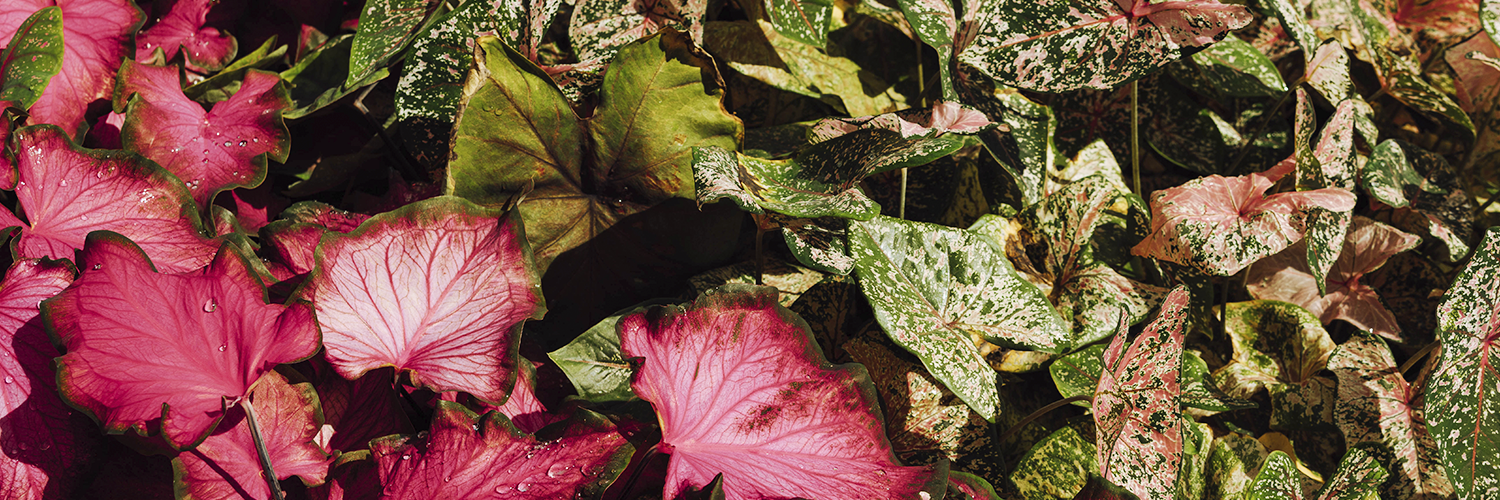
Caladiums can add vibrant color with their uniquely patterned leaves. They make excellent container plants and are easy to grow, given proper care. When cared for correctly, containerized caladiums will continue to put out new leaves, bringing long-lasting joy in vibrant colors. With this guide to caring for caladiums in containers, you’ll be able to enjoy their beauty all season wherever you want.
Choosing the Right Container
Caladium tubers prefer containers that are wider than they are deep. Shallow pots that are 8 to 12 inches across allow ample room for caladiums to spread out. Make sure containers have drainage holes to prevent soggy soil. Terra cotta clay and plastic pots both work well. Fill pots most of the way with a commercial potting mix formulated for containers, place tubers upright (which is simple because Classic Caladiums paints the tops of the bulbs) and cover with one or two inches of soil. This will provide the drainage and nutrients that potted caladiums need.
Planting and Placement
Plant caladium tubers one to two inches deep in pots, spaced six to eight inches apart. Place them according to where they’ll thrive best, whether they’re shade, partial shade, or full-sun varieties. Position containers where they will receive four to six hours of filtered sunlight daily. Locations under tall trees or on shaded patios are ideal for shade loving caladiums. After new leaves emerge, begin fertilizing every other week with a balanced liquid fertilizer diluted to half strength. Alternatively, a controlled release fertilizer applied at planting will save time and energy.
Water and Humidity
Since caladiums grown as houseplants lack moisture from natural rainfall, they require regular watering. Check soil moisture daily, watering whenever the top inch becomes dry. Caladiums also appreciate humidity levels around 60 percent. Setting pots on pebble trays filled with water creates a humid microclimate surrounding the plants.
Continued Care
As the season progresses, remove faded leaves by pinching them off at the base to keep plants looking their best. This stimulates new leaf growth, so plants remain full and lush all season. Stop fertilizing 6 weeks before the expected first fall frost. Once cooler weather arrives and leaves yellow, allow foliage to die back naturally.
Storing Tubers Over Winter
When frost blackens the foliage, cut plants back to soil level and move pots to a dark, cool location between 60 and 70 degrees Fahrenheit for winter dormancy. Stop watering tubers, allowing the soil to go completely dry. After six to eight weeks, check that tubers are still firm and free from rotting. Healthy tubers can be stored in dry peat, vermiculite, or potting soil over the winter months. In the spring, you can replant tubers outdoors after the last frost or in containers to enjoy colorful caladiums once again. With proper care, tubers can be overwintered indoors and replanted year after year.
If you don’t want to commit to planting your gorgeous caladiums in the ground, containers are a great way to get the benefit of their beauty wherever you want it. Just follow these tips for keeping your caladiums happy, and you’ll enjoy a growing season full of unmatched color and texture.
Check out our Caladiums



